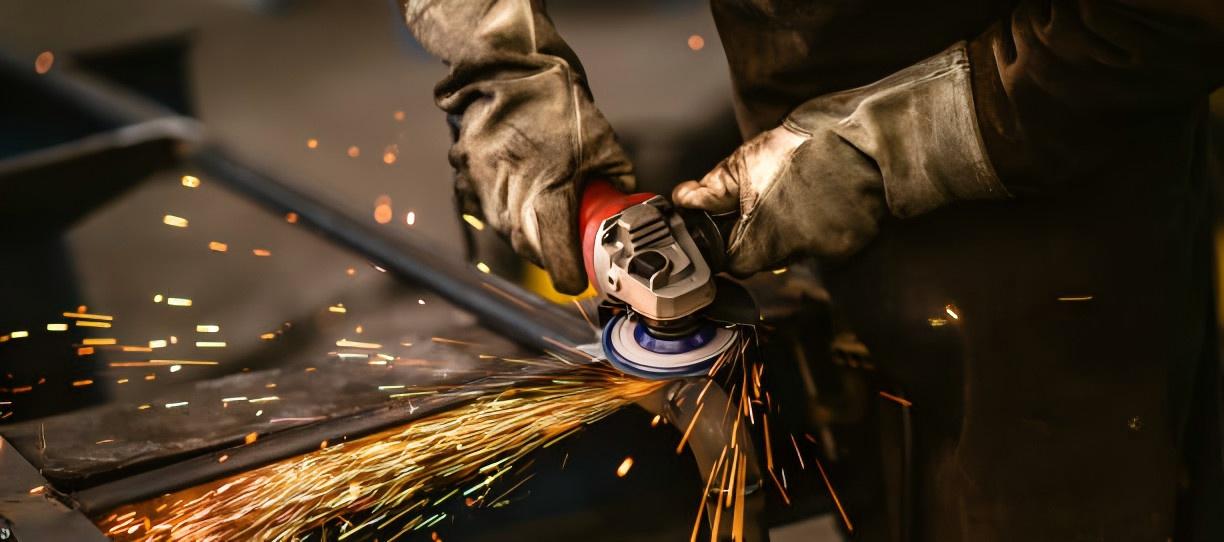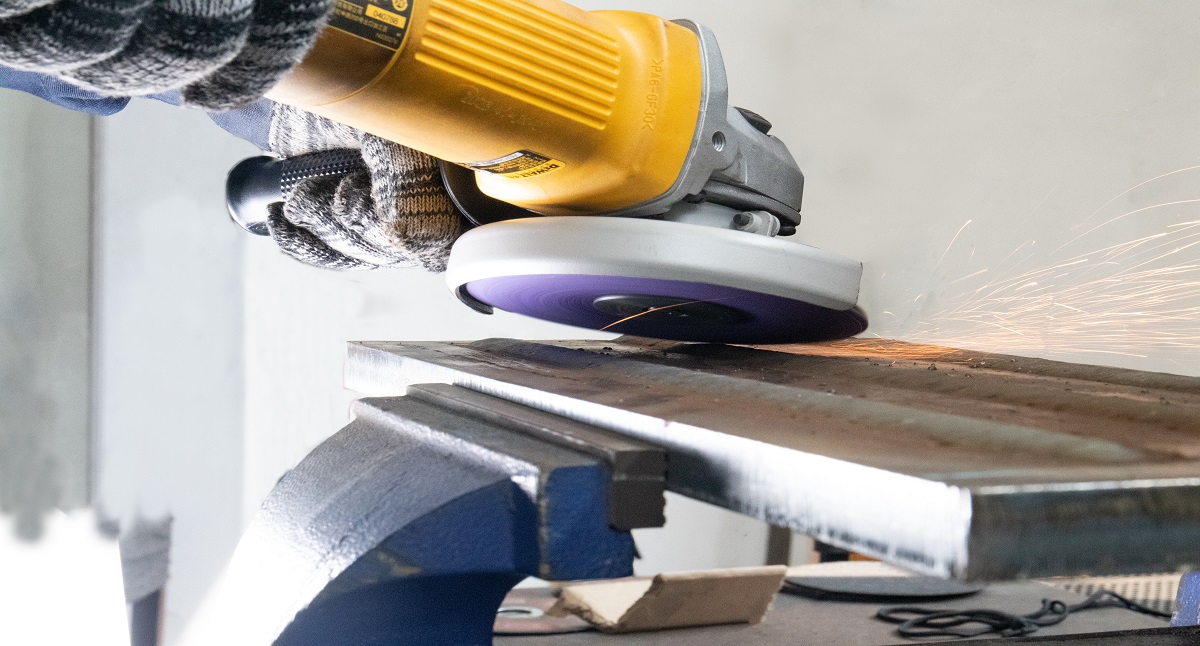Welding is an essential process in manufacturing and construction, creating strong joints that can withstand significant stress and strain. However, once a weld is complete, it often requires finishing touches to ensure a smooth surface. This is where weld seam removal comes into play. Properly finishing welded joints enhances aesthetics and ensures that the surface is safe and ready for subsequent processes, such as painting or coating. Two common tools for this task are grinding discs and fiber discs. In this article, we will explore the differences between these two types of discs, their applications, and which might be the best choice for your specific weld seam removal needs.
Understanding the Basics
Before diving into the specifics of grinding discs and fiber discs, it’s essential to understand their fundamental characteristics.
- Grinding Discs: These are made from abrasive materials bonded together. They are designed for heavy-duty material removal and can handle tougher tasks, including grinding down weld seams. Grinding discs are typically thicker than fiber discs and come in various grit sizes, allowing for significant versatility depending on the task at hand.
- Fiber Discs: These discs are also made from abrasive materials but are generally thinner and more flexible than grinding discs. They are mounted on a backing pad and are excellent for finishing applications, allowing for smoother surfaces after the initial welding has been completed. Fiber discs are often used for lighter grinding tasks and finishing work.
Applications and Use Cases
Grinding Discs
Grinding discs are the go-to choice for heavy-duty applications. Their robust construction allows them to remove material quickly and efficiently. Here are some specific scenarios where grinding discs shine:
- Removing Excess Weld Material: When a weld is too high or uneven, a grinding disc can effectively reduce the height of the weld seam, creating a flush surface with the base material.
- Shaping and Contouring: In cases where the welded joint needs to be contoured or shaped, grinding discs can provide the necessary power and precision to achieve the desired profile.
- Surface Preparation: Before painting or coating, a smooth surface is essential. Grinding discs can prepare the metal surface by removing scale, rust, or any remaining slag from the welding process.
- Thick Materials: For heavy-duty applications involving thick steel or other metals, grinding discs are ideal due to their ability to withstand high pressure and provide aggressive material removal. Options like the 3 inch grinding disc are particularly useful for smaller or intricate jobs.
Fiber Discs
Fiber discs are often used for finishing applications, where precision and surface quality are paramount. Here are some common applications for fiber discs:
- Finishing Welds: After using a grinding disc to remove excess material, fiber discs can be used to refine the surface, providing a smooth finish without excessive material removal.
- Polishing: Fiber discs are excellent for polishing surfaces, making them suitable for tasks that require a clean, shiny appearance, such as automotive applications or decorative metalwork.
- Blending: When blending the weld area with the surrounding material, fiber discs provide a finer touch, allowing for seamless transitions between the weld and the base material.
- Light Material Removal: For tasks requiring less aggressive material removal, such as removing paint or rust, fiber discs are often preferred. They work effectively with angle grinder fiber discs for a more refined finish.
Comparing Performance
When it comes to performance, there are several factors to consider between grinding discs and fiber discs:
- Material Removal Rate: Grinding discs excel in heavy material removal, making them faster and more efficient for tasks involving significant weld seam reduction. Fiber discs, while effective, typically remove material at a slower rate.
- Surface Finish: Fiber discs provide a superior surface finish compared to grinding discs. The flexibility of fiber discs allows them to conform better to the surface contours, resulting in a smoother finish.
- Durability: Grinding discs tend to have a longer lifespan when used for heavy-duty applications, while fiber discs may wear out more quickly when used on tough materials.
- Versatility: Grinding discs are versatile and can handle a wide range of applications, from aggressive grinding to fine finishing. Fiber discs, while excellent for specific tasks, are generally more specialized.
Choosing the Right Disc for Your Needs
The decision between using a grinding disc or a fiber disc for weld seam removal ultimately depends on the specific requirements of your project. Here are some guidelines to help you choose the right disc:
- Nature of the Task: If your task involves heavy material removal, such as grinding down a high weld seam or shaping the weld, a grinding disc is likely the best choice. For tasks that require finishing or polishing, opt for fiber discs.
- Material Type: Consider the material you are working with. For tougher materials, grinding discs are typically more effective. In contrast, for softer metals or delicate tasks, fiber discs may be preferable.
- Desired Finish: If achieving a high-quality finish is crucial, fiber discs should be your go-to choice. They excel in creating smooth surfaces and blending weld seams with surrounding materials.
- Equipment Compatibility: Ensure that the discs you choose are compatible with your grinding or polishing equipment. Some machines may be better suited for one type of disc over the other, especially regarding fiber disc backing pads.
Cost Considerations
While the initial cost of the discs is an important factor, it’s also crucial to consider the cost per use. Grinding discs, though potentially more expensive upfront, often last longer in heavy-duty applications. On the other hand, fiber discs may be less costly but may require more frequent replacements, especially if used on tougher materials. When evaluating options, it’s helpful to consult grinding disc manufacturers and fiber disc manufacturers for guidance on the best products for your needs.
Safety Considerations
Regardless of the type of disc used, safety is paramount when performing weld seam removal. Here are some safety tips to keep in mind:
- Personal Protective Equipment (PPE): Always wear appropriate PPE, including safety glasses, gloves, and a face shield. This will protect against flying debris and sparks.
- Dust Control: Both grinding and fiber discs can produce a significant amount of dust. Using a vacuum or dust extraction system can help minimize exposure to harmful particles.
- Proper Handling: Ensure that the discs are properly mounted and handled according to manufacturer guidelines to prevent accidents and equipment failure.
Conclusion
In summary, both grinding discs and fiber discs have their unique strengths and applications when it comes to weld seam removal. Grinding discs are the best choice for heavy material removal and shaping tasks, while fiber discs excel in finishing and polishing applications. By understanding the specific needs of your project, you can make an informed decision on which type of disc will deliver the best results.


